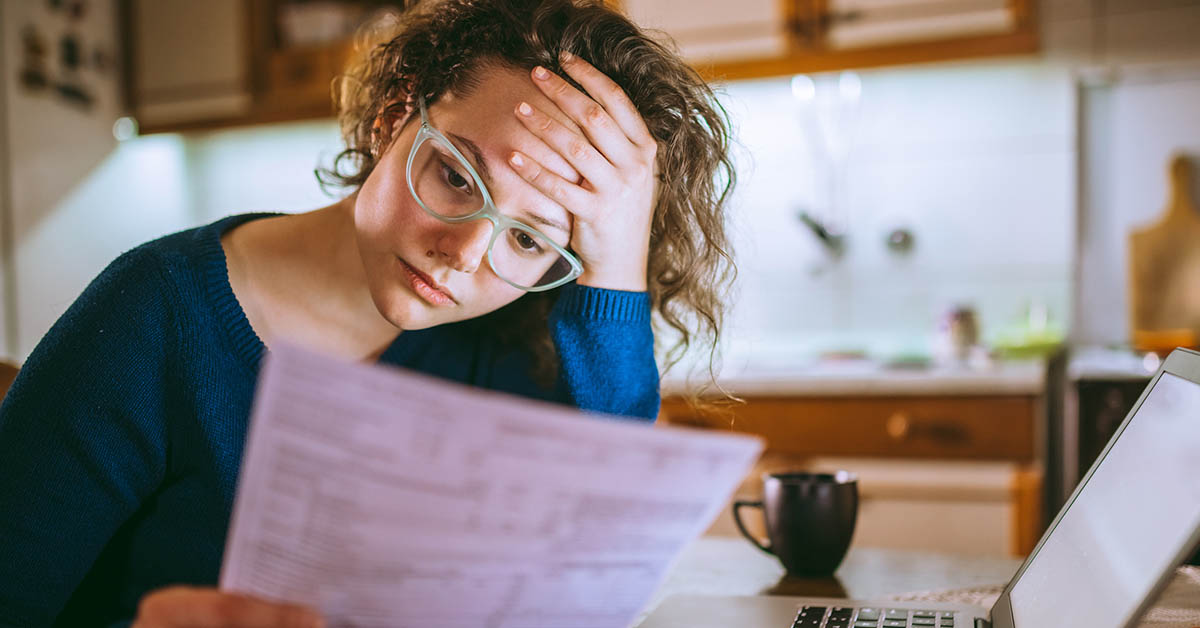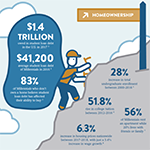
Student Loan Debt Roadblock to Homeownership
More kids are going to college today than ever before. From an academic perspective, that’s a great thing. From a real estate perspective, it’s a cause for concern because of debt they face after they graduate, and how it impedes their ability to buy a home for the first time.
According to the National Association of REALTORS® (NAR) 2018 Profile of Homebuyers and Sellers, the share of first-time home buyers fell for the third straight year to 33 percent. Prior to the end of the first-time buyers’ credit in 2010, the rate of sales to first-time homebuyers was 40 percent – or higher.
“Low inventory, rising interest rates and student loan debt are all factors contributing to the suppression of first-time home buyers,” NAR Chief Economist Lawrence Yun said in a statement. “However, existing home sales data shows inventory has been rising slowly on a year-over-year basis in recent months, which may encourage more would-be buyers who were previously convinced they could not find a home to enter the market.”
The biggest hurdle for first-time homebuyers is saving for a down payment, and according to the NAR data, 50 percent of respondents said that student loan debt was the chief roadblock to saving for that down payment. A whopping 40 percent of first-time buyers surveyed indicated they had a median debt of $30,000.
“Even with a thriving economy and an abundance of job opportunities in many markets, monthly student loan payments coupled with sky-high rents and rising home prices make it exceedingly difficult for potential buyers to put aside savings for a down payment,” said Yun.
Even though down payments are as low as three percent now, most respondents are putting down much more. The median down payment was 13 percent, a three percent increase from 2017 and the biggest percentage since 2005. First-time homebuyers saw a two percent increase from 2017, up to seven percent – the highest since 1997.
However, there are tools available to first-time homebuyers that can make the path toward home ownership a little smoother.
Some states have adopted first-time homebuyer savings accounts, where individuals or couples can save money – tax free – in a savings account at a local bank to go toward the down payment of a future home purchase. In some states, parents and grandparents can contribute to this account.
There are many federal loan programs that can be of assistance as well:
- Veterans Affairs (VA) loans – These loans are insured by the U.S. Department of Veterans Affairs for certain veterans, service members, spouses and other eligible beneficiaries. They don’t require a down payment or mortgage insurance but do charge a one-time funding fee of 0.5% to 3.3%, depending on the type of loan, the size of the down payment and the nature of your military service.
- U.S. Department of Agriculture (USDA) loans – The U.S. Department of Agriculture insures home loans for low-to moderate-income homebuyers in eligible rural areas. Like VA loans, there is no down payment for a USDA loan. But there is an upfront fee of 1% and an ongoing annual fee of 0.35%, both of which apply to purchases and refinances.
- Federal Housing Administration (FHA) loans – Insured by the U.S. Department of Housing and Urban Development (HUD), borrowers can get an FHA loan with a down payment as low as 3.5%. Additional fees include an upfront mortgage insurance premium of 1.75% and an annual mortgage insurance premium of 0.45% to 1.05%, depending on the type, size and length of the loan and the size of the down payment.
- Conventional loans – Some mortgage lenders offer small down payment mortgages—as little as 3% down payment (HomeReady) —to borrowers who qualify. These loans, however, aren’t insured by a government agency, so the lender will require private mortgage insurance (PMI). The cost of PMI varies but is often between 0.5% and 1% of the loan amount. You can typically request to have your PMI dropped once you have at least 20% equity in the home.
NAR conducted its survey in July by mail among a weighted random sample of recent homebuyers. A total of 7,191 responses were received from persons who had purchased a primary residence between July 2017 and June 2018.
For more tips and resources for first-time homebuyers, click here.
Be an informed homeowner. Learn more about the impact of student load debt on the housing market and your community.
Be an Informed Homebuyer
Stay informed! Get updates that include informative videos, real estate-related articles and infographics.






